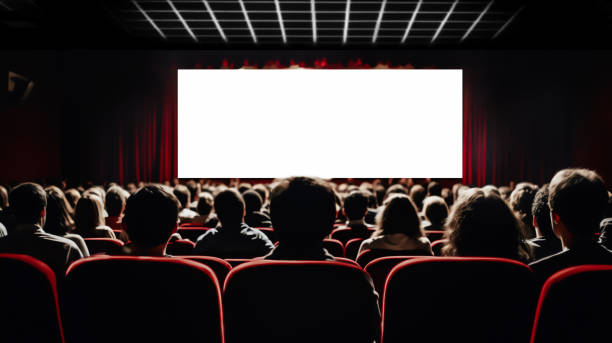Beyond the Frame: Silent Cinema's Secret Language in Modern Filmmaking
The lost art of silent film communication continues to shape today's most innovative directors, influencing everything from composition to emotional storytelling without words. Though often relegated to film history classes, silent cinema's visual vocabulary has experienced a remarkable resurgence among contemporary auteurs seeking alternatives to dialogue-heavy narratives. This renewed appreciation extends beyond mere homage to fundamental storytelling techniques that transcend technological evolution. As modern audiences grow increasingly sophisticated in their visual literacy, filmmakers are rediscovering that sometimes what remains unsaid carries the most profound meaning. The secret language of silent cinema offers timeless lessons in pure visual communication that continue to resonate across generations of filmmaking.

The Forgotten Visual Grammar of Early Cinema
Before synchronized sound revolutionized movies in the late 1920s, filmmakers had developed a sophisticated visual language to convey complex emotions and narratives. Directors like F.W. Murnau, Charlie Chaplin, and Sergei Eisenstein perfected techniques of composition, lighting, and editing that spoke directly to audiences without requiring words. The necessity of visual storytelling forced an incredible creativity in framing, camera movement, and performance. Close-ups became the language of emotion, while montage created meaning through juxtaposition. Even the stylized acting—often criticized by modern audiences as overexaggerated—represented a carefully developed system of gestural communication that audiences of the era understood intuitively. This visual grammar didn’t simply disappear when sound arrived; rather, it became embedded in the fundamental DNA of cinema, influencing generations of filmmakers who may not even recognize its origins.
Modern Masters of Visual Storytelling
Today’s most celebrated filmmakers frequently draw from silent cinema’s toolkit, often reimagining these techniques for contemporary audiences. Christopher Nolan’s intricate visual sequences in films like “Inception” frequently prioritize image over dialogue to advance complex concepts. Denis Villeneuve’s work, particularly in “Blade Runner 2049,” demonstrates masterful visual world-building that would make silent pioneers proud. Perhaps most directly, Michel Hazanavicius’ “The Artist” explicitly honored silent traditions while winning Best Picture at the Academy Awards. Meanwhile, Asian cinema—from Wong Kar-wai’s poetic compositions to the work of Hirokazu Kore-eda—has maintained a particularly strong connection to visual storytelling that transcends language barriers. These filmmakers understand that in an increasingly global film market, visual communication offers universal accessibility that dialogue cannot match. Their work demonstrates that silent cinema’s techniques aren’t museum pieces but living tools for modern expression.
The Psychological Impact of Showing Rather Than Telling
The power of silent cinema techniques extends beyond aesthetic considerations into the realm of cognitive psychology. When filmmakers withhold dialogue and force viewers to interpret visual information, they activate different neural pathways than verbal processing. Studies suggest that visual storytelling often creates stronger emotional connections and more memorable experiences for audiences. The famous Kuleshov Effect—where viewers interpret the same facial expression differently depending on what image precedes it—remains as relevant today as when Soviet filmmaker Lev Kuleshov discovered it in the 1910s. Modern filmmakers consciously manipulate this effect, understanding that audiences bring their own interpretations to visual juxtapositions. This psychological engagement explains why sequences with minimal dialogue often become the most memorable in contemporary films. When viewers must work to interpret meaning rather than having it explained, their investment in the story deepens substantially.
Technical Innovations That Honor Silent Traditions
While digital technology has transformed filmmaking, many recent technical innovations actually serve to enhance the visual storytelling techniques pioneered during the silent era. The development of lightweight digital cameras has enabled a return to the fluid, expressive camera movements that characterized the work of F.W. Murnau and other silent masters. Advanced color grading allows contemporary filmmakers to create emotional palettes reminiscent of hand-tinted silent films but with unprecedented precision. Even virtual production environments, where actors perform against digital backgrounds, echo the painted backdrops and in-camera effects of early cinema. Perhaps most significantly, the rise of social media has created a new appreciation for visual storytelling without words, as platforms like TikTok and Instagram prioritize visual communication over text. This technological environment has created fertile ground for the resurgence of visual storytelling principles first developed when technological limitations made them necessary.
Streaming Platforms and the Global Language of Visual Cinema
The streaming revolution has inadvertently fueled a renewed appreciation for visual storytelling techniques pioneered in silent cinema. As platforms like Netflix and Amazon Prime expand globally, content that relies heavily on dialogue faces translation barriers that visually-driven narratives avoid. This market reality has encouraged investment in projects that emphasize visual storytelling accessible to international audiences. Series like “The Silent Sea” from South Korea and films such as Alfonso Cuarón’s “Roma” have demonstrated the commercial viability of productions that prioritize visual communication over dialogue. Streaming platforms also provide unprecedented access to restored silent classics, allowing new generations of viewers and filmmakers to study these foundational works. The algorithmic recommendation systems of these platforms frequently connect viewers who enjoy contemporary visually-driven content with its historical antecedents, creating unexpected pathways for discovery. This convergence of commercial incentives and artistic appreciation has positioned visual storytelling as increasingly central to global entertainment.
From Silents to Social Media: The Circular Journey of Visual Storytelling
The language of silent cinema has completed a remarkable circular journey through film history, from necessity to choice and back to necessity in new forms. Early filmmakers had no choice but to communicate visually; today’s social media creators face similar constraints in capturing attention without sound as users scroll through feeds. This parallel has created unexpected connections between the earliest cinema and its most contemporary expressions. Film schools increasingly emphasize studying silent classics not as historical curiosities but as masterclasses in visual communication relevant to modern platforms. Directors like David Fincher and Darren Aronofsky openly acknowledge how silent film techniques inform their approach to composition and emotional progression. As attention spans fragment and global audiences expand, the ability to communicate complex ideas visually becomes increasingly valuable. The pioneers of silent cinema would likely recognize their own visual language in today’s most innovative content, proving that some storytelling principles transcend both technology and time.





